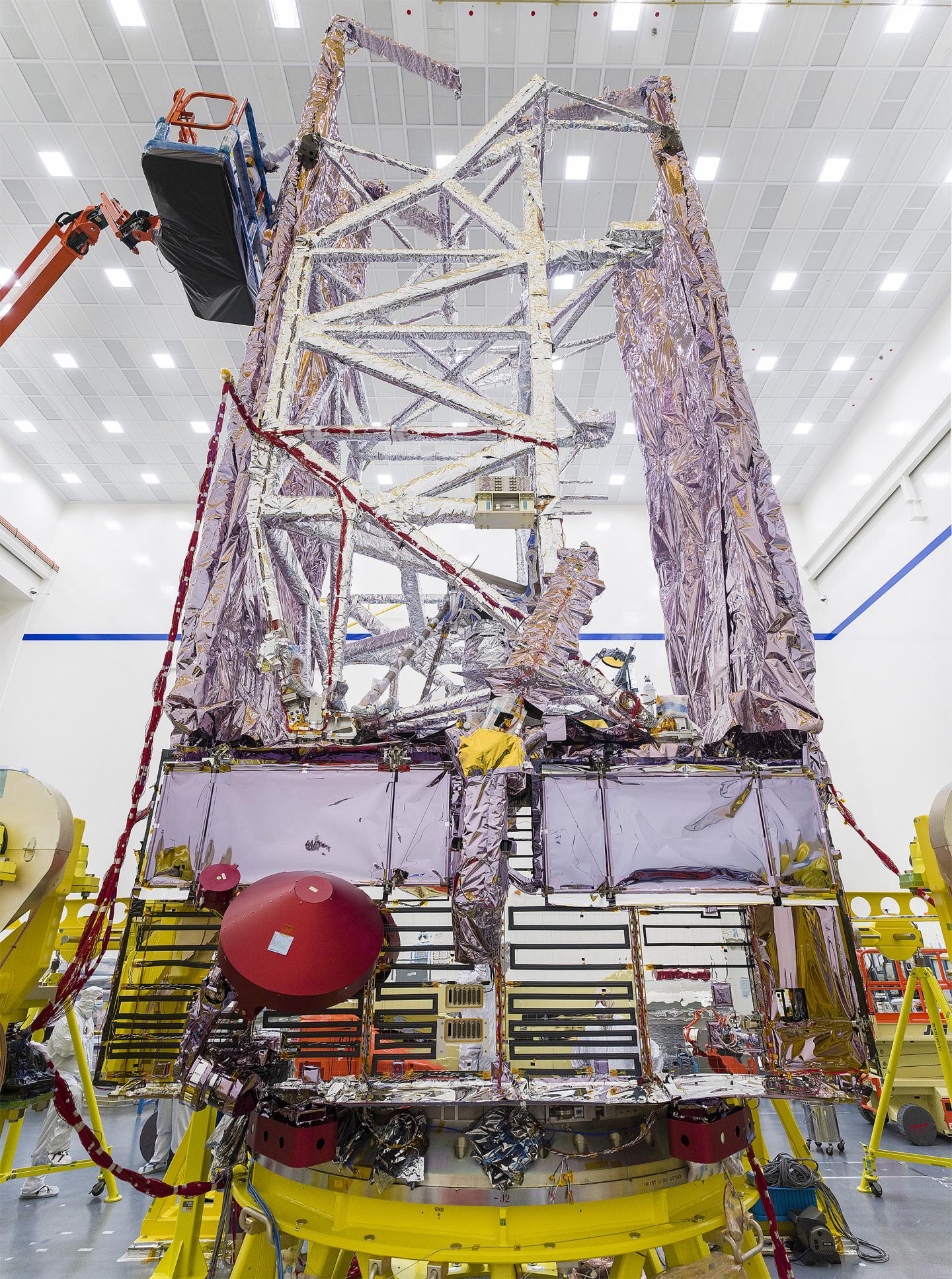
Credit: NASA/Chris Gunn
NASA’s James Webb Space Telescope’s spacecraft element, which consists of the observatory’s spacecraft bus and the sunshield, was put in the same folded-up configuration that it will be in when mounted on atop a rocket for launch in 2021.
Since Webb is too large to fit inside a rocket in its “deployed,” or operational, form, it will be tested in its folded-up, or “stowed,” launch configuration that takes up less space. Webb’s enormous sunshield has to be elaborately folded and secured to both fit in the rocket’s nose cone and be strong enough to survive the ride into space.
In the two weeks after launch, the entire observatory will undergo a highly choreographed transformation–unfurling, extending and expanding to a configuration that is very different to how it looks when stored inside the rocket for liftoff.
In a photo taken in the clean room at Northrop Grumman Corporation in Redondo Beach, the last sunshield stowing step for the spacecraft element was completed, after engineers rotated the aft Unitized Pallet Structure (UPS) in a full upward position and locked it. There are two UPSs–a forward and an aft one; the aft UPS is the longer one. All five expansive sunshield membranes are folded up and pinned flat to the UPSs. A big silver truss-like structure in between the two UPSs is a structural substitute for the flight telescope element, which has already been tested separately.
In the stowed configuration, the spacecraft element was transported on a giant dolly from the clean room to test facilities in other buildings at Northrop Grumman where it was subjected to environmental testing. Now that it has passed those tests, the next big thing is to return the spacecraft element to the clean room and deploy, inspect and verify that it got through those flight environment tests successfully.
Once operational, the James Webb Space Telescope will be the world’s premier space science observatory. Webb will solve mysteries of our solar system, look beyond to distant worlds around other stars, and probe the mysterious structures and origins of our universe and our place in it. Webb is an international project led by NASA with its partners, ESA (European Space Agency) and the Canadian Space Agency.
For more information about NASA’s Webb observatory, visit: http://www.
###
Media Contact
Laura Betz
[email protected]
Original Source
https:/




